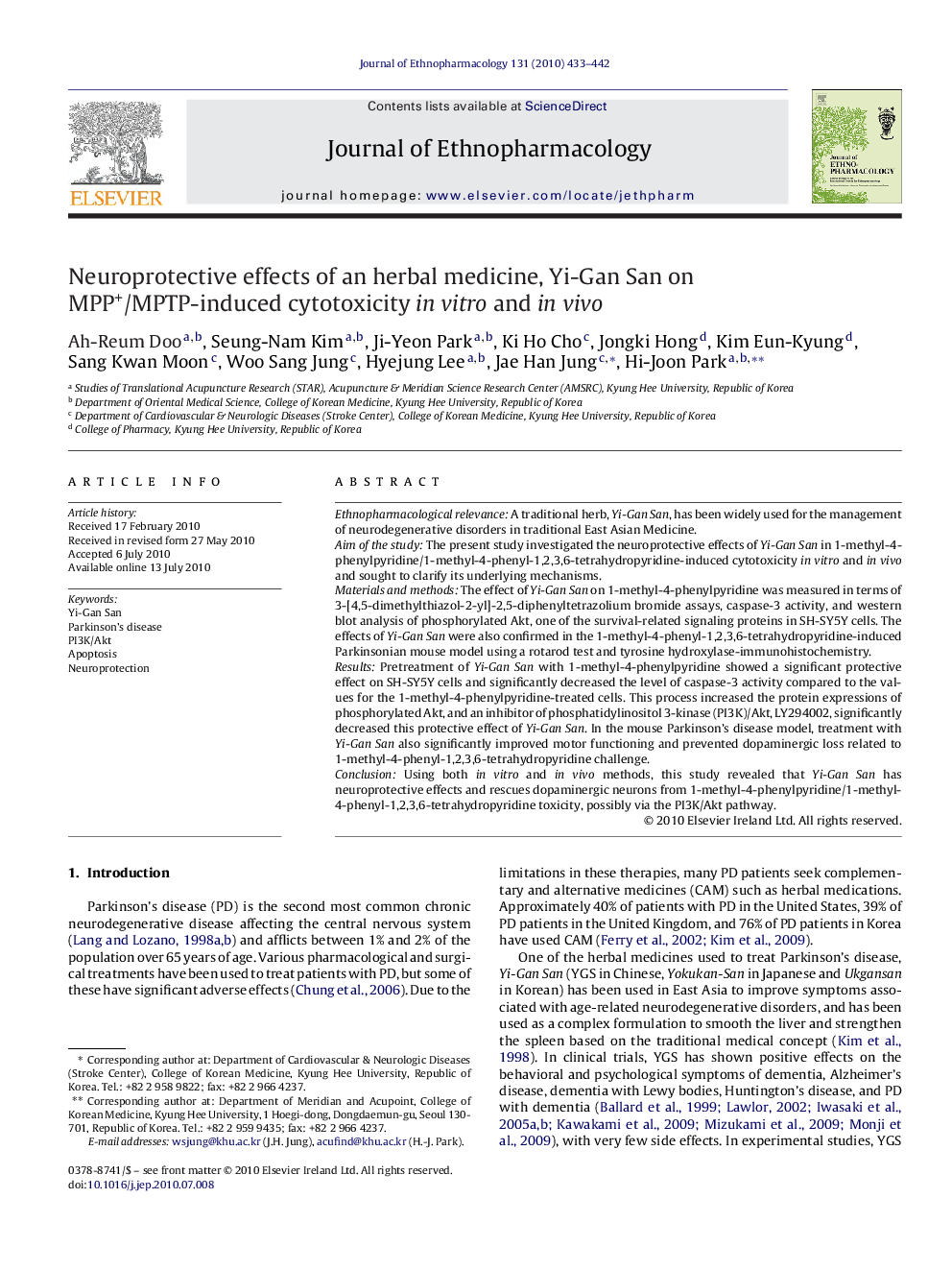| کد مقاله | کد نشریه | سال انتشار | مقاله انگلیسی | نسخه تمام متن |
|---|---|---|---|---|
| 2545997 | 1124012 | 2010 | 10 صفحه PDF | دانلود رایگان |

Ethnopharmacological relevanceA traditional herb, Yi-Gan San, has been widely used for the management of neurodegenerative disorders in traditional East Asian Medicine.Aim of the studyThe present study investigated the neuroprotective effects of Yi-Gan San in 1-methyl-4-phenylpyridine/1-methyl-4-phenyl-1,2,3,6-tetrahydropyridine-induced cytotoxicity in vitro and in vivo and sought to clarify its underlying mechanisms.Materials and methodsThe effect of Yi-Gan San on 1-methyl-4-phenylpyridine was measured in terms of 3-[4,5-dimethylthiazol-2-yl]-2,5-diphenyltetrazolium bromide assays, caspase-3 activity, and western blot analysis of phosphorylated Akt, one of the survival-related signaling proteins in SH-SY5Y cells. The effects of Yi-Gan San were also confirmed in the 1-methyl-4-phenyl-1,2,3,6-tetrahydropyridine-induced Parkinsonian mouse model using a rotarod test and tyrosine hydroxylase-immunohistochemistry.ResultsPretreatment of Yi-Gan San with 1-methyl-4-phenylpyridine showed a significant protective effect on SH-SY5Y cells and significantly decreased the level of caspase-3 activity compared to the values for the 1-methyl-4-phenylpyridine-treated cells. This process increased the protein expressions of phosphorylated Akt, and an inhibitor of phosphatidylinositol 3-kinase (PI3K)/Akt, LY294002, significantly decreased this protective effect of Yi-Gan San. In the mouse Parkinson's disease model, treatment with Yi-Gan San also significantly improved motor functioning and prevented dopaminergic loss related to 1-methyl-4-phenyl-1,2,3,6-tetrahydropyridine challenge.ConclusionUsing both in vitro and in vivo methods, this study revealed that Yi-Gan San has neuroprotective effects and rescues dopaminergic neurons from 1-methyl-4-phenylpyridine/1-methyl-4-phenyl-1,2,3,6-tetrahydropyridine toxicity, possibly via the PI3K/Akt pathway.
A traditional herb, Yi-Gan San has neuroprotective effects and rescues dopaminergic neurons from 1-methyl-4-phenylpyridine/1-methyl-4-phenyl-1,2,3,6-tetrahydropyridine toxicity, possibly via the PI3K/Akt pathway.Figure optionsDownload as PowerPoint slide
Journal: Journal of Ethnopharmacology - Volume 131, Issue 2, 15 September 2010, Pages 433–442